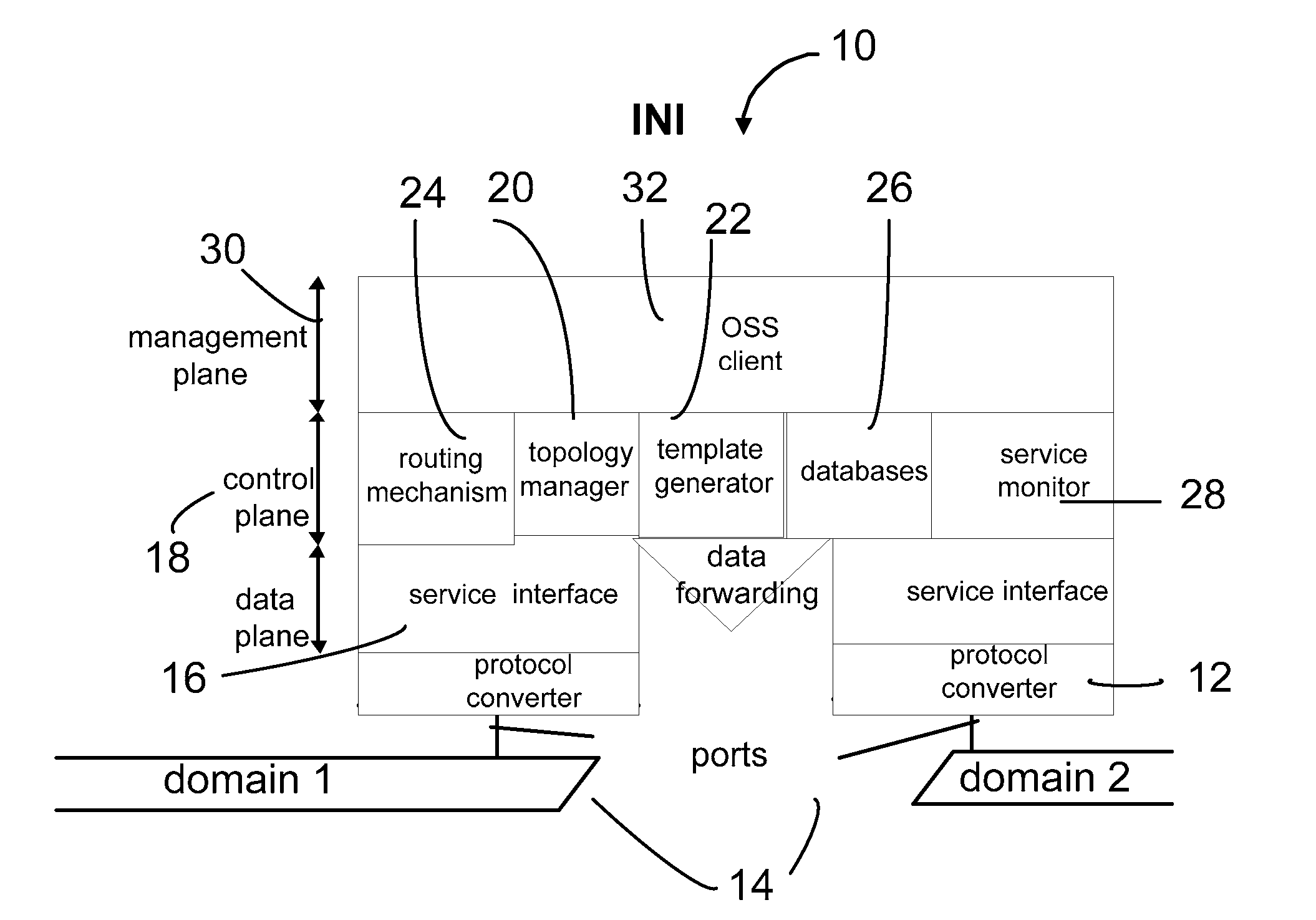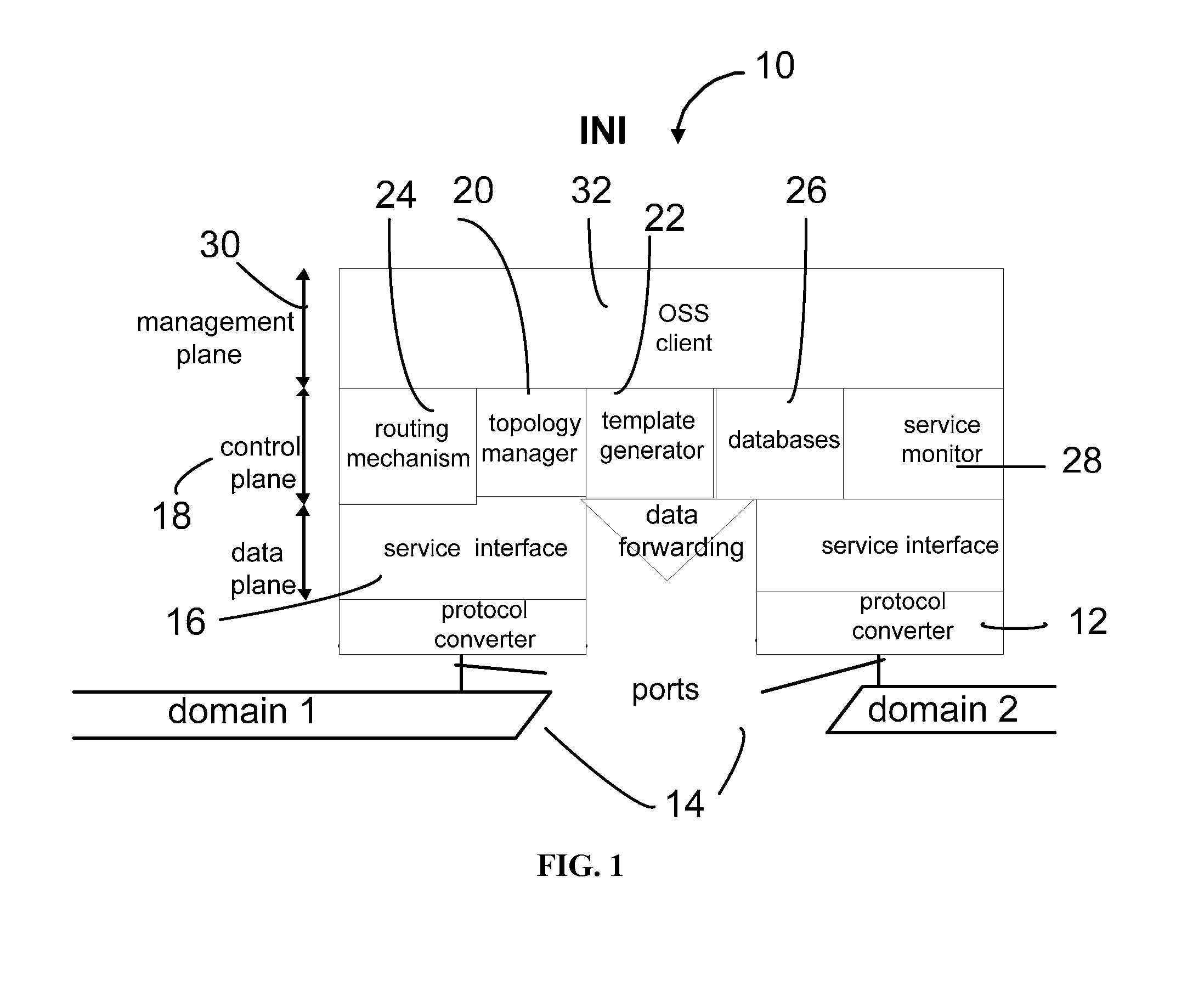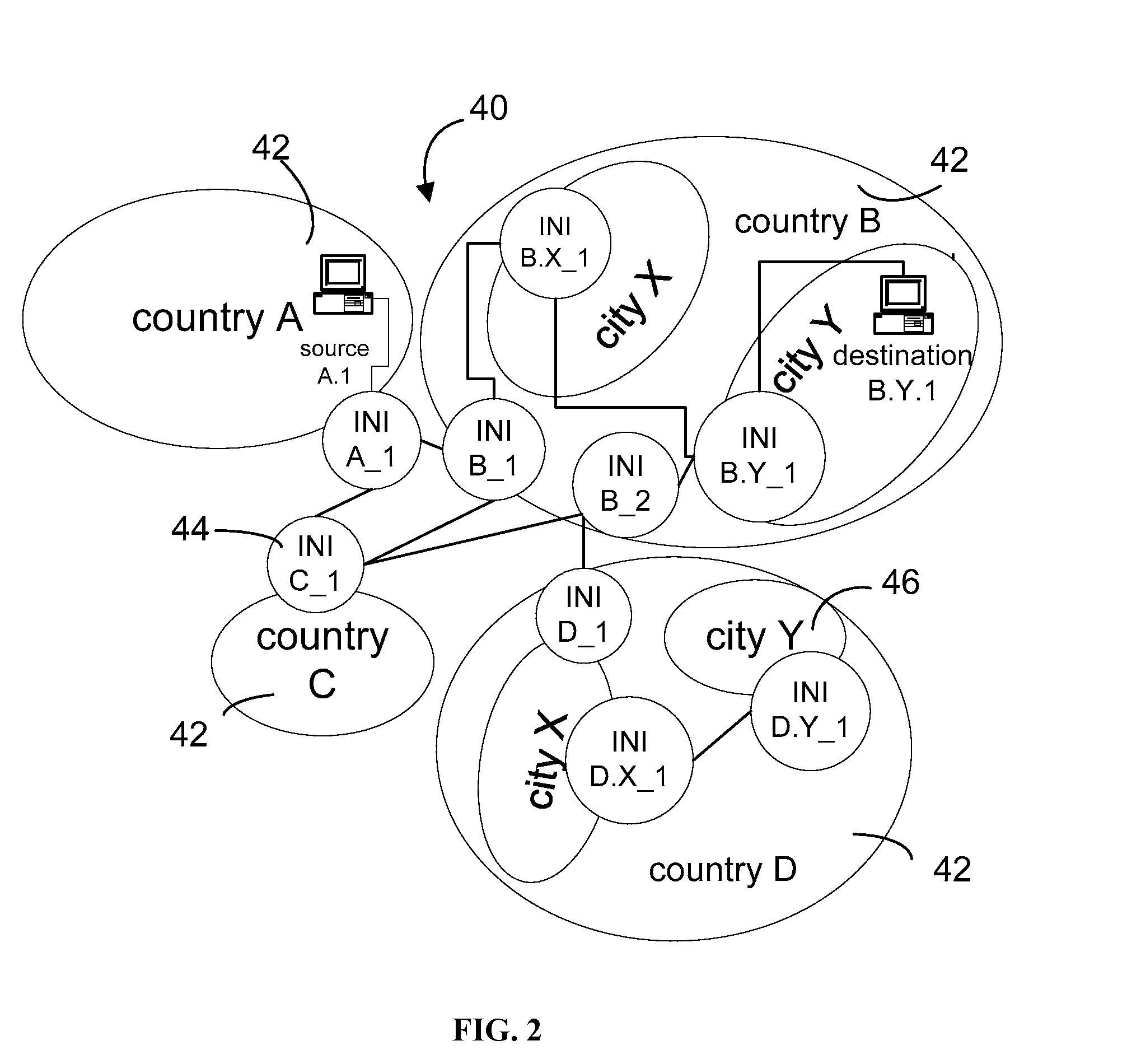Automatic signaling method and device for telecommunication services
a technology of automatic signaling and telecommunication services, applied in the direction of multiplex communication, time-division multiplex, electrical apparatus, etc., can solve the problems of patents not providing a mechanism to ensure qos in each network, conventional telephone addressing schemes cannot be used for general data services, and patents not providing a global unique addressing schem
- Summary
- Abstract
- Description
- Claims
- Application Information
AI Technical Summary
Benefits of technology
Problems solved by technology
Method used
Image
Examples
Embodiment Construction
[0029]Example embodiments of fast automatic signaling between a source in a first network and a destination in a second network, and through any networks therebetween, are provided. Exemplary signaling can include requests and responses to requests for connectivity, resource reservation and management, authentication, authorization and billing capability for multi-network, multi-carrier and multi-technological telecommunications networks. Each network is referred to as an Autonomous System (AS). This term can refer to one network in a network environment. For purposes of the present application, an AS is a network domain of a single technology (a single data protocol) and a single carrier. Example embodiments of an apparatus called an Inter Network Interface (INI) are provided on each border port between networks. In particular, an INI can be located at each border between a network and a network or networks external to that network.
[0030]A method of end-to-end signaling between a f...
PUM
 Login to View More
Login to View More Abstract
Description
Claims
Application Information
 Login to View More
Login to View More - Generate Ideas
- Intellectual Property
- Life Sciences
- Materials
- Tech Scout
- Unparalleled Data Quality
- Higher Quality Content
- 60% Fewer Hallucinations
Browse by: Latest US Patents, China's latest patents, Technical Efficacy Thesaurus, Application Domain, Technology Topic, Popular Technical Reports.
© 2025 PatSnap. All rights reserved.Legal|Privacy policy|Modern Slavery Act Transparency Statement|Sitemap|About US| Contact US: help@patsnap.com



